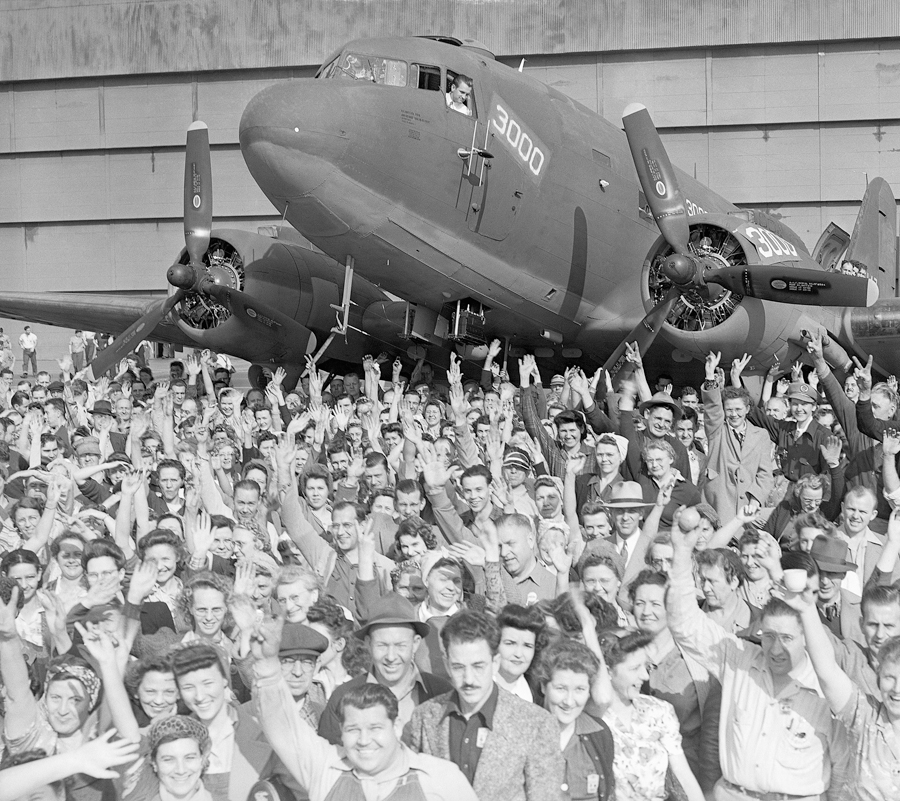Conversion to a War Economy.
Printed Page 694 Chapter Chronology
Conversion to a War Economy. In 1940, the American economy remained mired in the depression. Shortly after the attack on Pearl Harbor, Roosevelt announced the goal of converting the economy to produce "overwhelming..., crushing superiority of equipment in any theater of the world war." Factories were converted to assembling tanks and airplanes, and production soared to record levels. By the end of the war, jobs exceeded workers, and plants operated at full capacity.
To organize and oversee this tidal wave of military production, Roosevelt called upon business leaders to come to Washington and, for the token payment of a dollar a year, head new government agencies such as the War Production Board, which set production priorities and pushed for maximum output. Contracts flowed to large corporations, often on a basis that guaranteed their profits.

Booming wartime employment swelled union membership. To speed production, the government asked unions to pledge not to strike. Despite the relentless pace of work, union members kept their no-strike pledge, with the important exception of members of the United Mine Workers, who walked out of the coal mines in 1943, demanding a pay hike and earning the enmity of many Americans.
Overall, conversion to war production achieved Roosevelt's ambitious goal of "crushing superiority" in military goods. At a total cost of $304 billion during the war, the nation produced an avalanche of military equipment, more than double the combined production of Germany, Japan, and Italy. This outpouring of military goods supplied not only U.S. forces but also America's allies, giving tangible meaning to Roosevelt's pledge to make America the "arsenal of democracy."